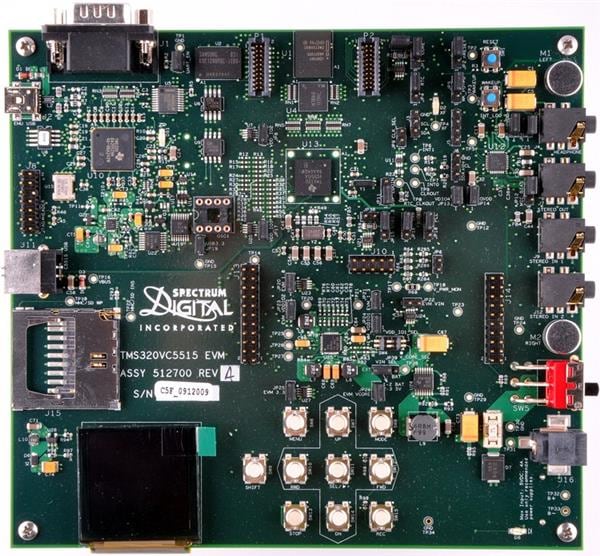Other Parts Discussed in Thread: ADS1298
C:\c5515>hex55.exe -boot -v5505 -serial8 -b -o .\bootimg1.bin .\CSL_GPIO_InputPinExample.out Translating to Binary format... ".\CSL_GPIO_InputPinExample.out" ==> .text (BOOT LOAD) ".\CSL_GPIO_InputPinExample.out" ==> .cinit (BOOT LOAD) ".\CSL_GPIO_InputPinExample.out" ==> .const (BOOT LOAD) ".\CSL_GPIO_InputPinExample.out" ==> .switch (BOOT LOAD)
-
We have not changed anything regarding PLL.
-
We dint change anything physical on the board like jumpers etc..
-
We are using Code Composer Studio 12 with a XDS100v3 Emulator.
-
We have an ESP32 and a ADS1298 connected with SPI using CS0 and CS1.
MEMORY
{
MMR (RW) : origin = 0000000h length = 0000c0h /* MMRs */
DARAM (RW) : origin = 00000c0h length = 00ff40h /* on-chip DARAM */
SARAM (RW) : origin = 0010000h length = 040000h /* on-chip SARAM */
SAROM_0 (RX) : origin = 0fe0000h length = 008000h /* on-chip ROM 0 */
SAROM_1 (RX) : origin = 0fe8000h length = 008000h /* on-chip ROM 1 */
SAROM_2 (RX) : origin = 0ff0000h length = 008000h /* on-chip ROM 2 */
SAROM_3 (RX) : origin = 0ff8000h length = 008000h /* on-chip ROM 3 */
EMIF_CS0 (RW) : origin = 0050000h length = 07B0000h /* mSDR */
EMIF_CS2 (RW) : origin = 0800000h length = 0400000h /* ASYNC1 : NAND */
EMIF_CS3 (RW) : origin = 0C00000h length = 0200000h /* ASYNC2 : NAND */
EMIF_CS4 (RW) : origin = 0E00000h length = 0100000h /* ASYNC3 : NOR */
EMIF_CS5 (RW) : origin = 0F00000h length = 00E0000h /* ASYNC4 : SRAM */
}
SECTIONS
{
vectors (NOLOAD)
.bss : > DARAM /*, fill = 0 */
vector : > DARAM ALIGN = 256
.stack : > DARAM
.sysstack : > DARAM
.sysmem : > DARAM
.text : > SARAM
.data : > DARAM
.cinit : > DARAM
.const : > DARAM
.cio : > DARAM
.usect : > DARAM
.switch : > DARAM
.emif_cs0 : > EMIF_CS0
.emif_cs2 : > EMIF_CS2
.emif_cs3 : > EMIF_CS3
.emif_cs4 : > EMIF_CS4
.emif_cs5 : > EMIF_CS5
}TMDXEVM5515 evaluation board:


